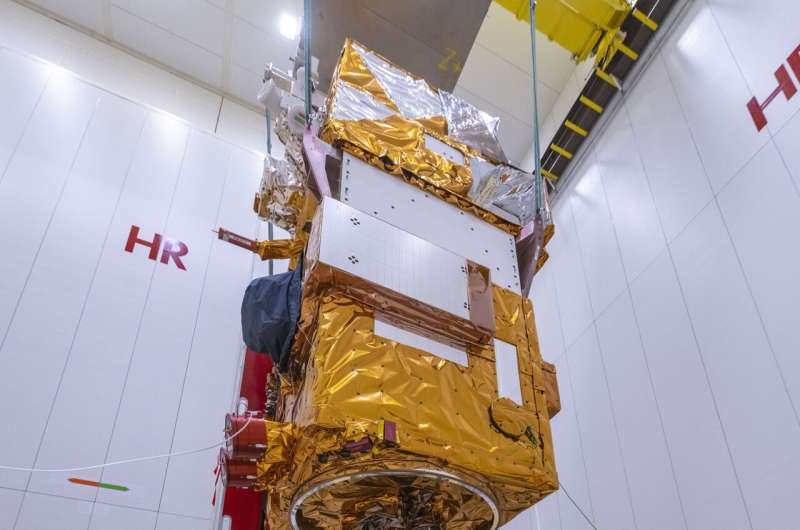
As preparations continue to launch the Copernicus Sentinel-2C satellite on 4 September, the team at Europe’s Spaceport in Kourou, French Guiana, has bid farewell to their precious satellite as it was sealed from view within the Vega rocket fairing.
Once in orbit, Sentinel-2C will provide high-resolution images for a wide range of applications including land, water and atmospheric monitoring, as are currently provided by Sentinel-2A and Sentinel-2B.
Since its arrival at the spaceport in July, Sentinel-2C has been undergoing all that it takes to get it ready for liftoff. This includes a huge number of careful checks to ensure all its components are in good working order, the hazardous task of loading the satellite with over 130 kg of volatile fuel and mating the satellite the Vega to the launch adapter.
And now, the teams have encapsulated the satellite within the rocket fairing. Apart from being a significant milestone on the road to liftoff, it is also somewhat emotional as the satellite itself won’t be seen again.
ESA’s Sentinel-2C launch campaign manager, Patricia Lopez, said, “The campaign to ready Sentinel-2C for launch has gone extremely well and this is thanks to the hard work from all the teams involved. Indeed, encapsulation is an important milestone and while we are extremely happy to have reached this point, it was also time for us to say farewell.
“For a very short time before the fairing closure, the lucky ones who were here could see the satellite as never before, all dressed-up in its flight configuration and looking like a precious jewel that we will now keep safely packed until launch.”
“Clearly, the real good-byes will come in less than two weeks now—liftoff is scheduled for 3 September at 22:50 local time here in Kourou, which is 4 September 03:50 CEST—which we are all very much looking forward to.”
As its name suggests, Sentinel-2C is the third in the Sentinel-2 series. Once commissioned in orbit, it will replace its predecessor, Sentinel-2A, which was launched in 2015. Later, Sentinel-2D will replace Sentinel-2B.
This all ensures the continuity of imagery for Copernicus Services and beyond.
The mission provides high-resolution optical imagery for a wide range of applications including land, water and atmospheric monitoring. The mission is based on a constellation of two identical satellites flying in the same orbit but 180° apart.
The satellites each carry a high-resolution multispectral imager that generates optical images in the visible, near-infrared and shortwave-infrared part of the electromagnetic spectrum. From their altitude of 786 km, they provide continuous imagery in 13 spectral bands with resolutions of 10 m, 20 m and 60 m, with a large swath width of 290 km.
Sentinel-2C will be taken into orbit on a Vega rocket—in fact the last rocket of its kind. Vega will be superseded by the new Vega-C.
Provided by
European Space Agency
Sentinel-2C sealed in the Vega rocket fairing (2024, August 23)
retrieved 24 August 2024
from https://phys.org/news/2024-08-sentinel-2c-vega-rocket-fairing.html
part may be reproduced without the written permission. The content is provided for information purposes only.





